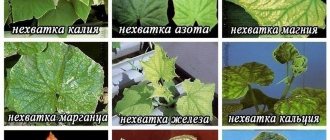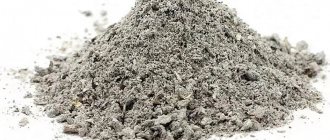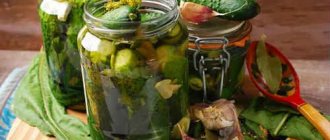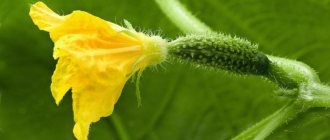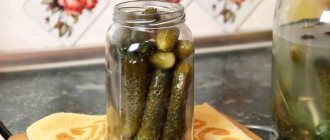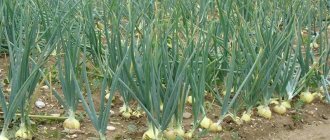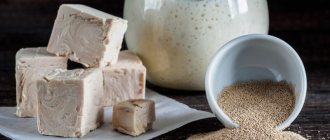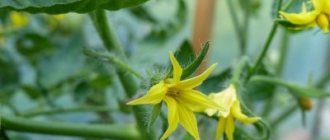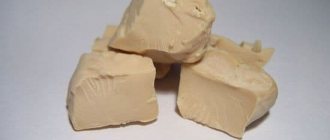» Vegetable growing » Cucumbers » Rules for watering cucumbers with whey
0
1803
Article rating
Various means of both artificial and natural origin are used to process vegetables. Watering cucumbers with whey has long been practiced by many vegetable growers. This composition is the result of souring of dairy products. It contains a large amount of nutrients.
- Processing rules
- Watering cucumbers with whey
- Flaws
Rules for watering cucumbers with whey
Beneficial properties of fermented milk product
Whey is obtained from whole milk by separating it from the curd. This yellowish liquid consists of 93-94% water and only 6-7% dry matter. The product is not only cheap, but also absolutely safe for cucumber bushes.
The beneficial properties of whey for vegetable crops are endless. Most often it is used in combination with iodine. This solution successfully fights many diseases. But you just need to use the fermented milk product wisely, given that it has high acidity.
As a fertilizer
The whey contains valuable amino acids and microelements such as phosphorus, zinc, nitrogen, calcium, iron, potassium and sulfur. Cucumbers are a heat-loving plant, and with any changes in the environment, their leaves turn yellow, dry out and fall off. The whole bush suffers.
What is the use of serum when processing cucumber bushes:
- prevents the development of rotting;
- stimulates the development of ovaries and growth;
- saturates the plant with amino acids and microelements.
Expert opinion
Stanislav Pavlovich
Gardener with 17 years of experience and our expert
Ask a Question
Reference! The fermented milk product works as an organic fertilizer. Thanks to it, the bushes will be strong and strong.
In pest control
Using a dairy product in its pure form is ineffective, so solutions are prepared on its basis with the addition of iodine, boric acid, ash or various herbs, the smell of which helps repel insects.
Using the serum, which caterpillars, moths and other pests love so much, a trap is prepared. Fermented milk liquid is poured into a pan or jar to a third of its volume and placed overnight in an area where there is an abundance of harmful insects.
In the fight against disease
Fermented milk product has an acidic environment, due to which there is an active fight against pathogenic microorganisms. The acidic environment is aimed at inhibiting fungi and bacteria. Therefore, the serum is used to treat cucumbers for the following diseases:
- late blight;
- root rot;
- powdery mildew.
These diseases are the main enemies of vegetable crops. After treatment, the bushes recover, and the damage disappears without a trace. The serum can be applied at the root to the soil or sprayed on the foliage.
Expert opinion
Stanislav Pavlovich
Gardener with 17 years of experience and our expert
Ask a Question
Often the effect of the product is enhanced by the addition of iodine. This solution creates a protective protein film on each leaf; it prevents spores of pathogenic fungi from germinating in the plant tissue.
Signs of iodine deficiency in plants
A lack of iodine in plants can lead to a decrease in their immunity to various diseases. The cause of iodine deficiency is usually an insufficient amount of this element in the soil (this is especially true for peat and podzolic soils, light sandy loams, as well as substrates deficient in organic matter). Excessively acidic soils are also unfavorable for iodine - in them, iodine immediately goes into the lower layers, becoming inaccessible to plants. Most natural iodine is found in chernozem fertile soils, in lowlands and, especially, in coastal areas.
Take a close look at your plants. Signs of iodine deficiency may include:
- poor fruit set, rotting of ovaries;
- red and yellow fruits of plants (tomatoes, peppers, etc.) are not bright enough and large enough;
- lack of starch in fruits;
- lack and pallor of the vegetative mass;
- delay in growth, flowering, formation of fruits and seeds;
- decreased resistance to nematodes, wireworms, and fungal diseases.
In general, it is quite difficult to visually determine the deficiency of this microelement in plants, since the signs of its deficiency are quite conditional, and some coincide with the signs of various diseases, the action of pests, freezing of plants, etc.
Therefore, we recommend at least preventive feeding of plants with iodine - at a minimum, this will be useful in any summer cottage and certainly will not harm the plants.
Preparation of the solution
Serum in its pure form is not used. To prepare a working solution, you need to use an active component that will repel insects, prevent diseases, or begin to stimulate the growth and development of vegetable crops.
With water
This is the easiest way. It will help get rid of pests such as onion fly, cabbage flea, mole crickets, slugs and aphids. The solution will act as a mineral fertilizer. For root treatment, mix serum and water in a ratio of 1:10. The water should be settled and at room temperature. Water each bush and plot of land at a distance of 40-50 cm.
You can spray cucumber leaves with this safe aqueous solution. Only in this case the concentration needs to be increased (the ratio should already be 1:3). To make the liquid stay better on the leaves, it is recommended to add grated laundry soap.
With iodine
Iodine is an excellent remedy that will help repel insects. Thrips, aphids, spider mites and other small pests are afraid of its smell. In addition, based on whey and iodine, you can prepare a solution for fertilizing cucumber bushes. Iodine will accelerate ripening, improve taste and be a good preventative against various diseases.
Best recipes:
- To strengthen the immune system and fight insects. Dilute 13-14 drops of iodine in 1 liter of whey. Mix well and spray the foliage. To improve effectiveness, you can add 7 drops of Fitosporin. Apply once every 7-8 days.
- Root feeding. Serum in combination with iodine is an explosive mixture, so it is important to maintain concentration. Pour 1 liter of whey into 10 liters of water and add 3 drops of iodine. Stir and water the bushes. Use 2 times a month.
- For growing foliage. In a bucket, mix 5 liters of water, 0.5 liters of milk liquid and 14-15 drops of iodine. Water at the root once every 2 weeks.
Important! Frequent use and failure to comply with proportions will lead to soil oxidation. As a result, cucumbers may stop bearing fruit.
With grass
Fresh grass in combination with a fermented milk product will be a good alternative to any chemical fertilizer. The most commonly used is nettle. An infusion based on it will contribute to a good harvest.
To prepare you will need:
- chopped fresh nettle - 1/3 of the volume of a 20 liter barrel;
- water – 6 liters;
- whey – 3 liters.
Place chopped herbs in a 20-liter barrel, add whey and water. Close the lid tightly and leave to brew for 14-15 days. Once the solution has fermented, it cannot be used in its pure form. For root feeding, dilute 1 liter of infusion in 10 liters of water.
With ash
This solution has a complex effect. Ash perfectly disinfects, fights insects and some diseases. In addition, it is rich in phosphorus, which has a beneficial effect on the ovary of cucumbers.
To prepare the working solution you need to take:
- wood ash - 1 cup;
- whey – 2 l;
- iodine – 10 drops;
- honey – 4-5 tbsp.
Dilute all the products in a bucket and leave covered for 2 days. Spray cucumber flowers. This will prevent them from falling off, and the fruits will acquire a rich, sweetish taste.
With boric acid
This substance is necessary for cucumbers for the normal development of fruiting. In combination with whey, this fertilizing will accelerate the growth of bushes, strengthen the root system and increase the size of the fruits.
See also How to feed cucumbers with ammonia in the garden
What you will need:
- whey – 3 l;
- boric acid – 0.1 g;
- iodine – 1 drop.
Mix boric acid and a drop of iodine in fermented milk liquid. Spray each bush after flowering begins.
Precautionary measures
The main thing when using whey is not to overdo it, otherwise you can upset the acid balance of the soil. And this, in turn, has a detrimental effect on the health of the plants. Undiluted product can burn the root system and leaves.
Attention!
The whey is not dangerous to humans, but people with dairy allergies still need to be careful.
Even the simplest methods have their own peculiarities. Gardeners have developed the following recommendations:
- the water for the solution should be warm (23-24 degrees) and settled;
- It is better to use fresh whey, without heat treatment;
- do not exceed the ratio of components according to the recipe;
- Apply the solution immediately on the day of preparation. Otherwise, pathogens may appear in it.
The benefit of using a milk fermentation product is that it does not harm the plant at any stage of development. In addition, it is not dangerous for beneficial insects.
How to properly fertilize cucumbers with whey?
It is necessary to feed cucumbers 10-11 days after they are planted in the beds. It is recommended to repeat the procedure in open ground once every 7-10 days. To water the bush, you should use 1 liter of freshly prepared solution. The spraying procedure on the beds should be carried out in the early morning or evening, since the sun's rays can burn the foliage. After fertilizing is applied, the plant must be watered with clean water. This will wash the product off the leaves.
Expert opinion
Stanislav Pavlovich
Gardener with 17 years of experience and our expert
Ask a Question
Reference! It is not recommended to start work if there is strong wind or precipitation outside. If it rains after the procedure, each bush will have to be treated again.
How and when to use dairy supplements
When caring for tomatoes, it is very important to alternate fertilization methods - root and foliar feeding.
When is it best to use:
- during the period of active development of the plant - after planting in a permanent place, it is recommended to alternately fertilize the roots and tops;
- during the growth process - before the root system gets stronger, use foliar fertilizing, after which it is recommended to switch to root fertilizers.
In order to protect vegetables from pests and increase their growth, it is necessary to regularly and timely water with milk mixtures, namely:
- The first feeding should be done 10 days after planting the seedlings;
- the second time when flowering appears on the tomatoes;
- the third feeding is carried out during the appearance of the first fruits;
- The fourth fertilizing is recommended to increase yield, also during the fruiting period of the crop.
How to feed tomatoes in a greenhouse
Caring for tomatoes in a greenhouse is a little different from caring for them in the garden. The greenhouse has its own correct microclimate, which must be maintained. It is very important not to disturb it, and this can easily be done by overdoing it with fertilizers.
Of course, this applies to a greater extent to sour dairy products. If acidic compounds enter the soil excessively, the proper development of the plant can be disrupted, which contributes to its withering.
How to prevent the plant from withering after fertilizing:
- moisten the soil only when it is dry;
- When watering, be careful not to let water get on the tomato leaves.
Important! It is recommended to water vegetable crops in the morning. After fertilizing with acidic compounds, ventilate the greenhouse.
Features of use in a greenhouse
In greenhouse conditions, the serum should be used carefully, taking into account increased humidity, temperature and ventilation.
Main rules:
- solution temperature 19-20C°;
- the concentration is 2 times weaker than when used on beds;
- carry out the procedure in the morning or evening;
- pre-moisten the soil with clean water so as not to burn the root and prevent acidification;
- Ventilate the greenhouse during operation.
In greenhouses, whey is used for the same purposes as in open space - for growth, against pests and for protection against diseases. Seedlings need to be watered once every 2 weeks. Apply fertilizing not only under the root itself, but also at a distance of 30 cm.
Reviews
Valentina, Zhukovsky: “Whey is an indispensable product in the country. Store-bought milk is of little use; I use natural milk from village milk. This serum contains many valuable microelements for plants.”
Artem, Krasnodar: “Tomatoes and cucumbers grow well on whey. I use it to feed plants at the roots. I dilute the product with water in a ratio of 1:8.”
Natalya, Ufa: “The serum helped get rid of aphids in just 2 sprays. There was a break of 10 days between procedures. Iodine was added to the solution. The pests left the site, but the plants themselves were not damaged.”
Treatment against pests and diseases
The dairy product repels insects that cause irreparable damage to the crop.
Among them:
- aphid;
- slugs;
- thrips;
- caterpillars;
- mole crickets;
- fleas.
To do this, traps are used and foliage is sprayed.
Expert opinion
Stanislav Pavlovich
Gardener with 17 years of experience and our expert
Ask a Question
Gardeners also use the serum to treat cucumbers for various diseases. The beneficial substances that are included in the composition are directed against pathogenic microorganisms and help eliminate the external manifestations of the disease.
Cucumber bushes most often suffer from the following diseases:
- fusarium;
- powdery mildew;
- leaf spot;
- rust.
For preventive measures, spraying is carried out 3 times a month.
